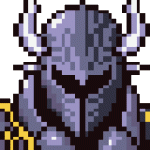Project: Alter Ego - An introduction.
...I have a trouble understanding this line, could you clarify it a bit more?
When stationary, the system will in theory perform coinciding footwork by matching the upper bodies movement in a predictive anatomically correct fashion...
All in all, you very carefully defined combat mechanics. There is much more to a game than it's features. I would say Minecraft doesn't have a single feature, yet it is an awesome game.
The most important question, why a gamer plays your game? We play Portal for a different reason we play Amnesia, so what is yours?
Your title suggests that you'd like to offer the gamer an alternate reality, where he can be something he isn't. That's very good, in my opinion that's where fable fell flat, you could do anything you'd like for shits and giggles, but it never managed to feel like an alternate me.
In that case, are you sure that this combat system enforces this aspect? Why do you think that?
Setting fire to these damn cows one entry at a time!
The most important question, why a gamer plays your game?
As in, what lures them to it and keeps them enthralled in the world?
offer the gamer an alternate reality, where he can be something he isn't.
while fixing
you could do anything you'd like for shits and giggles, but it never managed to feel like an alternate me.
In that case, are you sure that this combat system enforces this aspect? Why do you think that?
Hi there SinisterPride! I'm trying to be helpful, so please, don't take offense.
I think you're aiming a little too high for your first game and planning a little too much into a control system. It doesn't seem ideal. So much so that it doesn't look very fun from my perspective.
What I've learned is that if the controls seem overly complex to a player, then most players who try your game will quit and tell people about how unintuitive and bad the controls are, thus taking away from the potential audience you might have had. And a simple rule of thumb is that people believe others more if they say that game is bad rather than if a game is good. Its just pure human nature.
From my own experience, I helped a buddy of mine develop a game with very complex controls similar to yours and when our team built up even a simple prototype, it wasn't very playable. Sure, it could kind of do what he was looking for, but as it was played, we were more focused on getting things like swinging the sword or even walking to work properly rather than what the player was tasked with in the level. Kind of like if you're "playing" the game Toribash. The players tried so hard to do something they wanted, but it wasn't fluid and easy to use, so they got frustrated and quit.
From this, we learned that as you create more and more complex controls, you alienate the player further and further from your game. Take a game like Steel Battalion. You needed a huge, complex joy pad to play it and though it found some cult status popularity, it was widely said that the controls were too complex for many players or so unfriendly that it was unplayable for many and thus it fell into obscurity for years. It failed to deliver to a wide audience and that's why there wasn't a sequal until it had become a faint memory in consumers minds and a less complex (but still frustratingly difficult) control system was created. And that was with an experienced team with a large budget and years of development.
That brings me to my final point. A common piece of advice here on these forums is to learn to walk before you can run. Even if this wasn't your first game, getting a control system like that and the depth of your game built would be a pretty big task even for an experienced team.
Now, I'm not trying to discourage you, just trying to let you know of some of the difficulties I've noticed from your write up.
If you're dead set on creating your game like this, I would suggest creating a proof of concept or prototype first (which could take a long time). This will give you the chance to test the gameplay and really figure out if it's something worth playing or not. Again, from my experience (which might still be some-what limited, but I have a few games under my belt now), its better to keep things simple.
Once again, I hope I didn't offend you and that you take my advice into consideration.
Best of luck,
-Dave
Check out my game blog - Dave's Game Blog
Hmm... I didn't think it'd be necessary but I might have to expand my explination to include the main controls (everything written is an advanced alternative). I think I'll clarify each section/proposal by including an example of the basic form of combat along with the advanced version. I didn't think it was necessary because I ignorantly assumed every and anyone would know what I meant by the controls in The Elder Scroll series. I don't make a habit assuming for this reason lol.. I rather presume (as in have verifiable or a logical basis for my inference) and it looks like I broke my own rule ![]()
I'm sure you read the area stating what I intended to do in order to assure I don't alienate the more casual gamers. I've invested plenty of thought on ways to avoid alienating differing demographics. I want to make sure one feature in the game doesn't kill the rest of the experience for people. Just the same I'd like them to focus on what they enjoy in the game without feeling pressured to take part in other aspects. I should rephrase that because it doesn't take a casual gamer to just not be into extreme fighting mechanics. You would, to a certain extent, have to be a fan of the Fighting game genre to enjoy the FFC system in its most advanced form. It plays out more along the lines of Tekken/Soul Caliber/Dead or Alive when analyzed from an aesthetic perspective.
So yes, I understand your concern and I'm glad you brought it to my attention if only so I can stress that this is optional not manditory facet of combat.
Thank you Dave ![]()
Out of curiosity, why would a player choose to play with the complicated controls when simpler controls are available?
To be honest, when I first read your post, I thought:"I don't want to play that game". Now, that was based solely on the complex control-scheme you've laid out, and while it might be that this game could be everything I've ever wanted in a game, that control scheme just sounds frustrating and reminds me of the few minutes of laughs followed by more minutes of tedium that were QWOP.
Anyway, I don't mean offense, but, like Dave said, this is something that NEEDS to be prototyped first; I think
">this explains why pretty well.Inspiration from my tea:
"Never wish life were easier. Wish that you were better" -Jim Rohn
soundcloud.com/herwrathmustbedragons
@NoAdmiral: To answer your question from a "whats beneficial within the game" angle: As I said towards the begining of the post (in far too brief of a manner which I'll get around to soon enough) there are advantages to the alternative.
Each form comes with its rewards and penalties to compensate for the effort advanced users would put forth as well as balance the ease of simpler input.
So basically the answer to your question boils down to two things:
Learning and coping with the advance system garners benefits:
- Casting limited to the speed of your input not a set cast time
- Angles of attack as well as combos within melee combat which aren't standardized
- Draw speed for ranged combat as well as customizable draw strength (softer you pull the less power behind the arrow which lessens the distance it can travel but is a definite advantage for angled shots as well as stealth [less twang on release keeps you out of earshot] mechanics)
These are of few of the benefits aside from a noticeable damage difference across the board.
Its simply an option:
Alot of people may only like ketchup on their hotdog, but here in New York is not rare to hear "Lemme get one wit everything on it". ![]()
Like I said, its obviously not for everyone and I've thought of precautions to assure I don't alienate anyone. At the end of the day its just another matter of preference and opinion.
Trust me, I understand the technical aspect which both you and Dave are trying to warn me about. I'm well aware that something of this sort is highly difficult even in this day and age. Graphic responsiveness as well as input lag that may arise from processing command request can be enough on their own without considering other aspects of it. With the emergence of controllers which have 6DoF technology implemented, coupled with software like Max/MSP and Fretbuzz being readily available, it makes approaching something like this more than plausible in my eyes.
You guys made me dish out some of my tech talk ![]()
Hi ![]() Some questions and comments...and hopefully some useful food for thought.
Some questions and comments...and hopefully some useful food for thought.
You mention "joysticks"...is it safe to assume you're referring to the XBox-style game pad? With the two thumb sticks? If both thumb sticks would be used to control a two-handed sword, what would control facing, i.e. the way the player is looking? What controls where the player moves? (The two typical uses for each thumb stick.)
People stick to 'standard' control schemas because it's good to present the player with something familiar (it reduces learning curve) and - in general - you really want the controls to be as simple as possible. The games fun factor will not increase as control complexity does; sadly, quite the reverse, with very few exceptions. (The original Steel Battalion may be the only one.)
Now, if both thumb sticks are in use to control a weapon, the only options I can think of to control camera angle would be a target lock...which is doable, but is basically an aim bot built into the game. ![]() Or you might do a thing where the player needs to hold down a trigger to stop moving/looking and to swing...but then why not just make the triggers swing (which is a bit more standard as well).
Or you might do a thing where the player needs to hold down a trigger to stop moving/looking and to swing...but then why not just make the triggers swing (which is a bit more standard as well).
If you really want to get into making swordplay that's difficult to learn but worthwhile, I recommend trying to dig up a copy of Bushido Blade for PS1; the first one. Each weapon handled differently; each stance (high, mid, low) worked differently with each weapon. I remember very, very long, very fun to watch duels between myself and my friend...which was doable as we played the game daily for months in college.
Bushido Blade, late 90s if I remember correctly. Very advanced combat mechanics which, even then, I knew were far ahead of its time. I had an appreciation for the technicality even at that young age thanks to having already been in martial arts training for a few years. Indeed a great title to have been exposed to ![]()
Now, on to your questions/confirmations
Yes, when I envision things, alot of my designs come in the form of a Playstation or Xbox controller.
I'm glad you brough up camera control and mechanics as it is a recurring topic I've had to revisit. There are many rammifications to faulty camera work. I've specifically had to rethink and give myself options/varying proposals for two aspects. Melee combat (as you mentioned) and during casting.
For ranged combat the first person view (during advanced) or third person view with a reticule (during the unhinged or default combat) is simple enough if a zoom function is added to compensate for accuracy in third person.
?§• ??§?
During melee combat one of the more appealing (there are plenty like auto lock which are far from, just as you said) proposals involves the cameras behavior when intializing and disengaging "melee combat mode". The cameras' behavior in this method would be somewhat tied to the anatomically perdictive footwork mechanic. I don't think I got the chance to say it while I responded to BlueFireHawk but the predictive footwork isn't entirely limited to forward movements. During defensive actions (parries/blocks) You intutively retreat or side step as appropriate. The same applies to when a targets moves off to your side and you swing towards it, your body shifts just enough in that direction to stay partially in line (keep them in or near your hitbox). This isn't to say someone can't go past your hit box and that the system will always keep them squarely within as long as you are constantly attacking. The direction of your attacks play more of a part in which way you're facing than anything else.
To more closely adress the camera, engaging a target in melee combat would cause the camera to go slightly over the shoulder keeping far enough behind you to give you vision on your whole body as well as an accurate perception of where your weapon is if not direct sight of it. The camera will hypothetically be in a position to see whats in front of you (your hit box) and just beyond melee range. The tricky part comes with the fact that fighting in a linear path is unrealistic and people WILL get off to your side. In fact a large part of the combat in real life IS avoiding someones hit box while keeping them within yours. With this in mind, enemies will aim to move in position towards your blind sides while attacking.
This is where another part that I considered would be useful comes into play, how combat is initialized. I mentioned that entering and exiting combat is as simple as pressing a bumper. With this in mind I can slip out of my rigid fighting stance back into my the standard "move with one stick, look with the other" range of motion. Returning to default controls means it would literally take a second to align yourself with an enemy who is most likely still engaged in combat. Even if they too have disengaged, they can't be too far away with the small window it takes to disengage and look.
?§• ??§?
I know you didn't ask but while we're on it I might as well cover the second aspect, casting. The catch with camera placement during casting lies in two parts. The first is that ideally you want to be able to monitor your gestures as you're doing them. This is a real problem when you consider active combat situations. How can you expect to stay focused on your character doing his justu-like movements when theres a hulking beast barreling towards you?
A friend of mine proposed a small window off to one of the corners with a face to face, chest level shot of your character while keeping your camera where you generally left it. Not a bad suggestion and its still a consideration but my thoughts on it rested with another idea as well.
When the weaving process is initiated the camera shifts to an almost top down view of your character and slowly rotates on its own around them. To give a better perspective/more technical explaination, the camera is pointing downward at the character at about a 45° angle which is enough to see things at a distance while still keeping focus on the character. After the first step is completed and the character is ready to unleash and effectively target his spell the camera returns to something akin to the ranged cursor/reticule with a slight variation or two.
One thing you mentioned sparked something.
Or you might do a thing where the player needs to hold down a trigger to stop moving/looking and to swing...but then why not just make the triggers swing (which is a bit more standard as well).
If you read up on the top end of the OP, I mentioned intializing each form of combat in specifics. I however glazed over what I intend to do to "unhinge" each form of combat. I haven't quite decided on that, it could have too many consequences. Atleast if I did while everthing else isn't quite finalized as far as button layouts for the advanced combat. Dunno why, but that part of what you said made that come up in my mind. I'll be editing the OP to detail more of the default combat.
Hope this isn't too much and is indeed informative,
Sin ?§• ??§?
[quote name='SinisterPride' timestamp='1358738790' post='5023751']
Its simply an option:
Alot of people may only like ketchup on their hotdog, but here in New York is not rare to hear "Lemme get one wit everything on it".
Like I said, its obviously not for everyone and I've thought of precautions to assure I don't alienate anyone. At the end of the day its just another matter of preference and opinion.
[/quote]
Hotdog vendors do not have to QA their hotdogs with every possible combination of condiments. And the cost of adding each new condiment to their stall is negligible.
For game developers, it's not so simple. Every feature needs a certain amount of time and money invested in it to implement. Optional features can have the annoying additional side effect of multiplying the testing effort, which can substantially increase the overall cost of a feature, far beyond the value it provides. You have to ask yourself - is the feature worth the cost?
In this case, your FFC system looks extremely expensive. On it's own, it's a massively complex development task, more so than I think you fully appreciate. But on top of that, you now have to pretty much QA the game twice (once with each control system) which balloons the cost of the feature even more. Making it optional to hedge your bets with a controversial feature is not the easy way out you might think it is.
The next question - is it really worth the cost?











